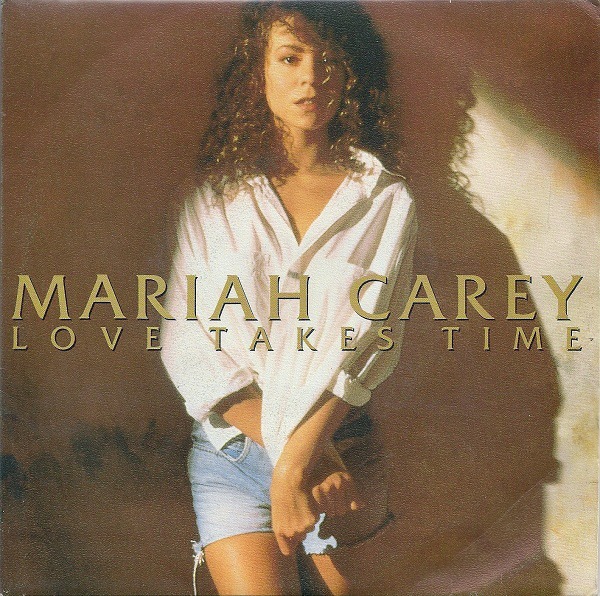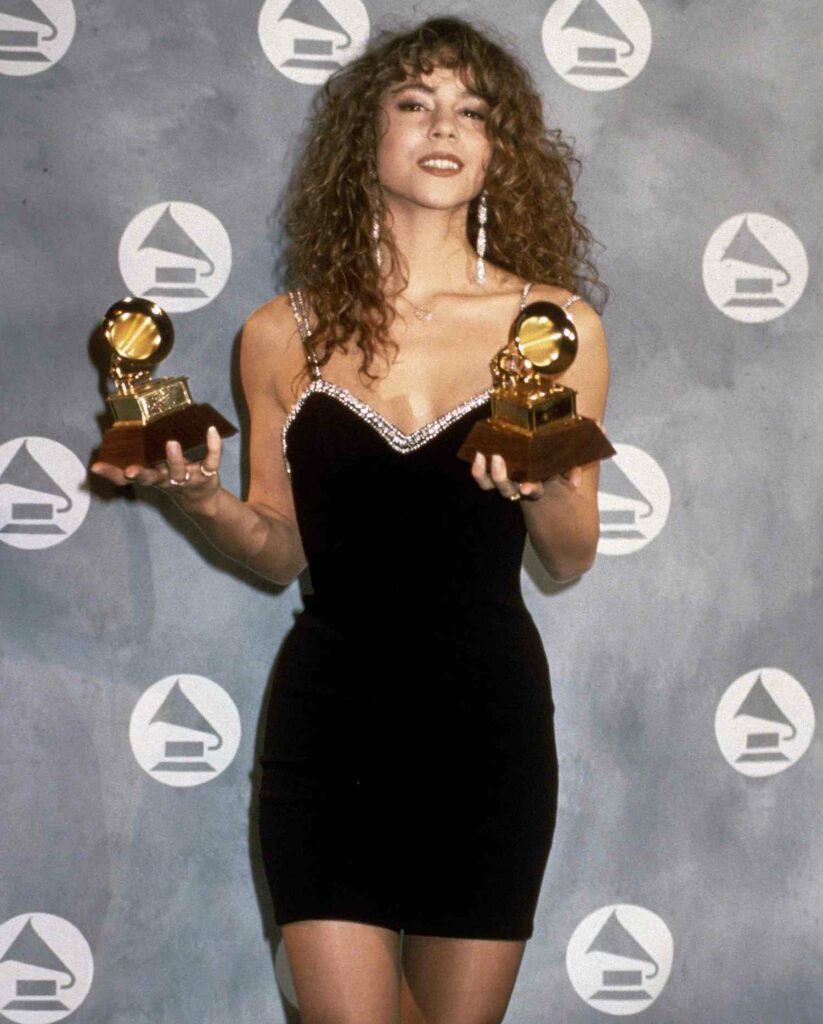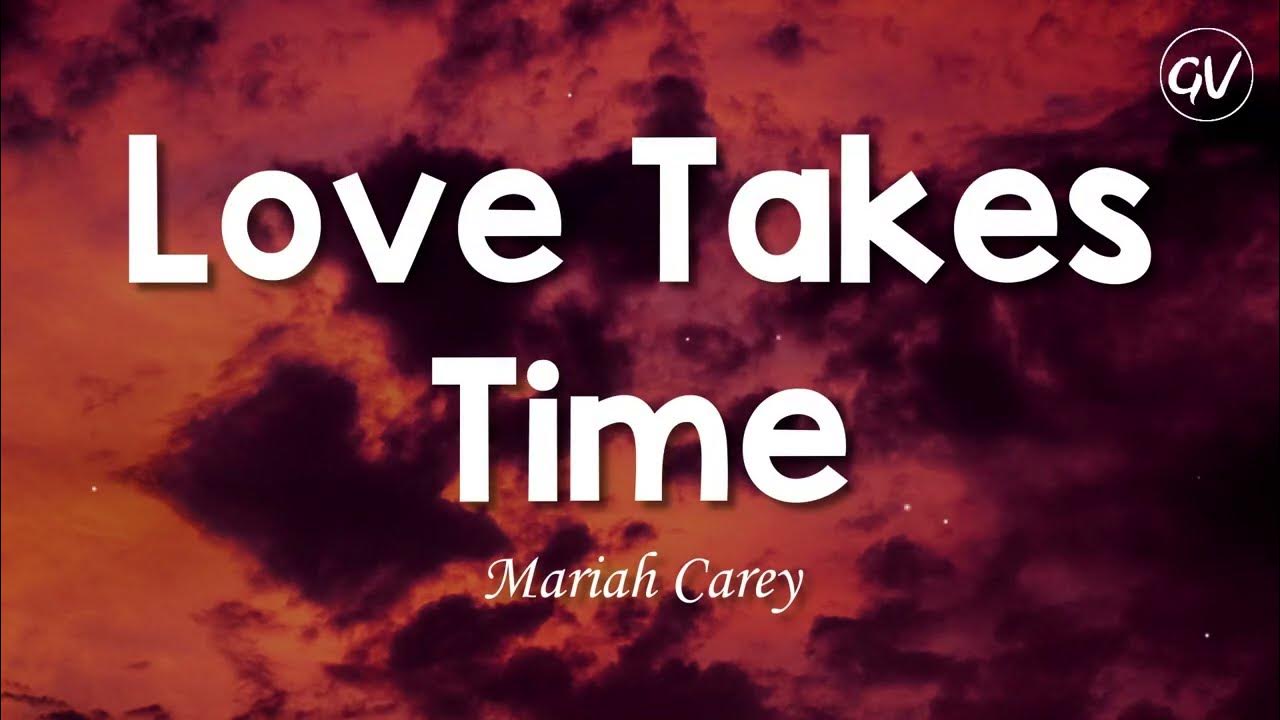Table of Contents
Love Takes Time is a memorable Mariah Carey song about longing and breaking up in a relationship. And how love takes time to grow.

Love Takes Time – A Song Overview
Mariah wrote this with songwriter Ben Margulies. It was intended for her second album, Emotions, but her label liked it so much they stopped presses of her first album, Mariah Carey, so it could be included. There are copies of Mariah Carey floating around that don’t have “Love Takes Time” on the track list even though the song is still on the album. According to Margulies, there wasn’t time to print the title on the original copies, which are a valuable piece of pop memorabilia.
This was Mariah’s second single. It followed up “Vision Of Love.”
This song marked the beginning of Mariah’s longtime association with Walter Afanasieff, who produced the single and went on to co-write her hits “Hero,” “One Sweet Day,” and “All I Want For Christmas Is You” (he also co-produced Celine Dion’s Titanic weeper “My Heart Will Go On”). At the time, Afanasieff was still a rookie who’d never produced anything by himself, and the last-minute recording session would prove his worth to Columbia Records if he could pull it off.
“We cut the song and the music and the basics in about a day – and the only reason is this deadline,” he recalled in The Billboard Book Of #1 Hits by Fred Bronson. “It was do it or we were gonna miss out on the whole thing. We got the tape and recorded everything and we got on the plane and went to New York and did her vocals.

Maria Worked Hard on the Vocals
She did all the backgrounds, practically sang all night… We came back to the studio that afternoon, and we had to fix one line that we needed to get from Mariah. She fixed that one line very quickly, then [engineer] Dana Jon Chappelle and I got back on the plane with the tape, went back to the studio in Sausalito, and mixed it. So it was a three-day process: a day and a half for music, kind of like a day for vocals, and a day for mixing.”
After another quick remix to boost the volume of Mariah’s vocals, the song made it on the debut album.
In the black-and-white music video, Mariah walks along a beach and contemplates the end of her relationship. Filmed at Venice Beach in Los Angeles, the clip was directed by Jeb Brien (Ozzy Osbourne’s Don’t Blame Me) and Wayne Maser (Mary J. Blige’s “Not Gon’ Cry”). Mariah recalled being freezing cold on the shoot and, upon viewing the completed video, she noticed the glue from her false eyelashes was visible. The singer said the experience was an example of how she used to let people make decisions about her style before she learned to speak up.
This was used in the TV series Pose in the 2019 episode “Revelations.”
This was also Mariah’s second #1 on the R&B chart.
Mariah Carey Bio
Mariah Carey is an American singer, songwriter, record producer, and actress. Referred to as the “Songbird Supreme” by Guinness World Records, she is noted for her songwriting, five-octave vocal range, melismatic singing style and signature use of the whistle register. An influential figure in popular music, Carey is credited with influencing vocal styles, merging hip-hop with pop through her collaborations and popularizing remixes. She has also been dubbed the “Queen of Christmas” for the enduring popularity of her holiday music, particularly the 1994 song “All I Want for Christmas Is You”, which is the best-selling holiday song by a female artist.
Carey rose to fame in 1990 with her self-titled debut album under the guidance of Columbia Records executive Tommy Mottola, whom she later married in 1993. She is the only artist to-date to have their first five singles reach number-one on the Billboard Hot 100, from “Vision of Love” to “Emotions”. Carey gained worldwide success with her albums, Music Box (1993) and Daydream (1995) ― both of which rank among the list of best-selling albums, and spawned singles such as “Dreamlover”, “Hero”, “Without You”, “Fantasy”, “Always Be My Baby” and “One Sweet Day”. The lattermost of these topped the US Billboard Hot 100 decade-end chart (1990s).
Mariah Adopts an Urban Image
After separating from Mottola, Carey adopted a new urban image and began incorporating hip-hop and R&B elements with the release of Butterfly (1997) and Rainbow (1999). By the end of the 1990s, Billboard ranked Carey as the most successful artist of the decade in the United States. She left Columbia Records in 2001 after eleven consecutive years of US number-one singles and signed a record deal with Virgin Records.
Following a highly publicized breakdown and the failure of her film Glitter and its accompanying soundtrack, Virgin bought-out Carey’s contract, and she signed with Island Records the following year. After a brief, mildly successful period, Carey returned to the top of the charts with The Emancipation of Mimi (2005) which became one of the best-selling albums of the 21st century. Its second single, “We Belong Together”, topped the US Billboard Hot 100 decade-end chart (2000s).
Her subsequent ventures included roles in the films Precious (2009), The Butler (2013), A Christmas Melody (2015), and The Lego Batman Movie (2017), being an American Idol judge, starring in the docu-series Mariah’s World, performing multiple concert residencies, and publishing the memoir The Meaning of Mariah Carey (2020).
Carey is one of the best-selling music artists, with over 220 million records sold worldwide, and is an inductee of the Songwriters Hall of Fame, the National Recording Registry at the Library of Congress and the Long Island Music and Entertainment Hall of Fame.
She was ranked as the second greatest woman in music by VH1 in 2012 and the fifth greatest singer by Rolling Stone in 2023. Billboard named her the top-charting female solo artist, based on both album and song chart success. She holds the record for the most Billboard Hot 100 number-one singles by a solo artist (19), a female songwriter (18), and a female producer (15), spending a record 92 weeks atop the chart. Carey is the highest-certified female artist in the United States and 10th overall, with 75 million certified album units. Among her accolades are 5 Grammy Awards, 10 American Music Awards, 16 Billboard Music Awards, and 12 Guinness World Records.



